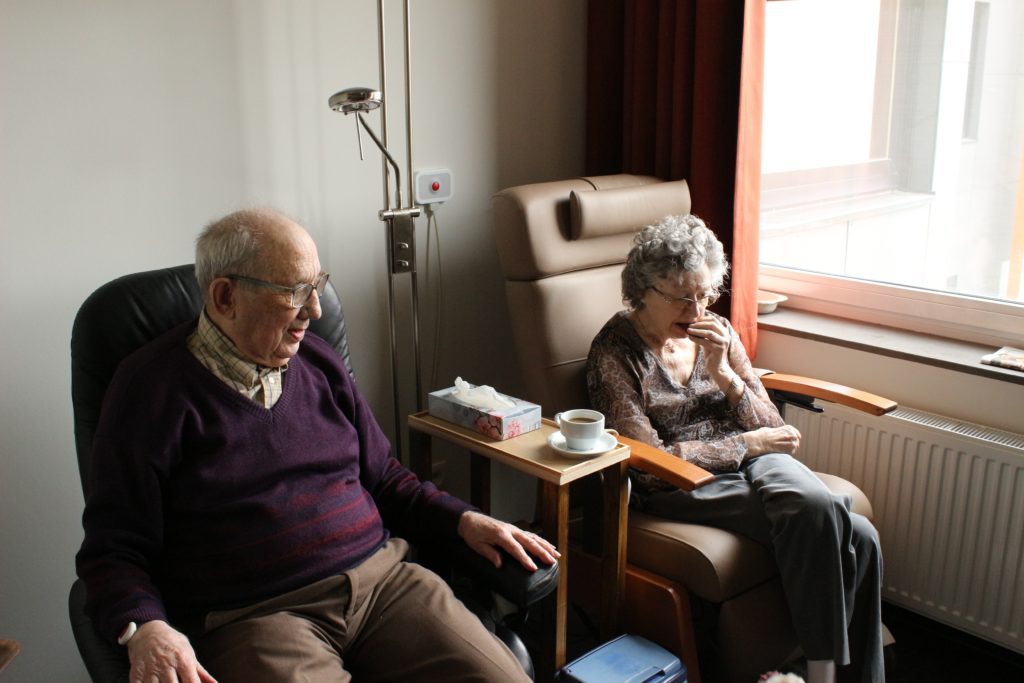Part 9: Risk Sharing
The VBP Blog
Welcome back to THE VBP Blog Series. As many of you have asked for continuing the global view of Value Based Payments, in today’s blog we look at how contracting entities take part in risk-sharing arrangements. This is usually an option for mature VBP organizations, with proven stable data tracks and clear quality controlled processes. Risk sharing involves actually foregoing revenues if goals are not accomplished. It should not be approached lightly.

Risk and reward. A shared risk value-based model representing possibly the best of both of those worlds. Thought of as the “next-level” of value payment methods, risk-sharing is the ultimate opportunity for payers and providers to increase their savings. Physical healthcare providers in risk sharing arrangements in California saw total costs of care drop 3.5 percent in 2017.
A shared risk model is a performance-based contractual relationship between a payer and a provider where they agree upon a standard that allows them to both share savings if met, and share costs if not met. Essentially, the provider accepts the possibility of a financial loss in exchange for the opportunity to gain a larger share of cost savings with an MCO. This can be done in two ways: either a percentage (e.g. 25% of overall premium) or a set amount (e.g. 50/50 of costs or savings). There must be a mutual agreement between the two parties for this model to work or the provider organization may look to a third-party insurance provider for a fixed fee to help limit their own financial risk.[This arrangement could include holdbacks withholding of funds when services are delivered; such funds may or may not be disbursed when goals are measured. One of our my favorite examples in the LTSS arena is the PACE (Program for All-Inclusive Care for the Elderly) program; we will be writing a blog in the near future about this program exclusively.
Atlas 3 research released in April 2019 references 2017 data of 30 million Californians in the commercial population. Atlas revealed higher clinical quality scores, a lower cost of care (3.5%/year difference), and lower pharmacy costs for members cared for by risk sharing providers compared to those cared for by non-risk sharing providers. Their conclusion was simple: “Risk sharing is an important part of the puzzle, because it allows provider organizations to shift from a transactional approval to a patient-centered perspective.”
Nationally, shared risk model participation is low at this time, though its impact is generally positive. The Center for Medicare and Medicaid’s Innovation’s (CMMI) Pioneer Program found that ACOs that took part in shared risk models had reduced rates in hospitalization (8%) and ED visits (6%), adding to the net savings for each beneficiary. Although there are limited studies available for the private sector, Blue Cross Blue Shield of Massachusetts launched a program called the “Alternative Quality Contract” where research attributed the reduced spending to the decrease in the number of services, which was about 40% of claims savings.

“Risk sharing is an important part of the puzzle, because it allows provider organizations to shift from a transactional approval to a patient-centered perspective.”
North Carolina is jumping on board with their new Blue Premier program. This value-based contract involves 5 major health systems including Duke University Health System and Cone Health. According to their press release, “the health systems will share in cost savings if they meet industry-standard goals to improve the health of patients – and share in the losses if they fall short.” A 5-year goal has been set to have all customers covered under Blue Premier’s care contract, with 50% coming by 2020.
The largest hurdle in front of successful shared risk programs is aligning providers and payers toward a common goal of improved health outcomes at a reduced total healthcare spend, not one or the other. Other issues holding providers back from going all-in on risk-based contracts include a lack of data sharing, lack of agreement on outcome measures, and other financial factors . If organizations can be transparent and put their goals on the same page, they will see improvements in quality, cost, and operational efficiency that achieve better care at a lower cost.
A shared risk contract is the future of the relationship between payers and providers in healthcare. As we lean in toward the goal of patient-centered care at a lower cost, this performance-based payment method is on the cutting edge of the future of healthcare.
Advocates’ Perspective: Risk sharing requires a long build up! It is designed to build on the basics of the insurance principles and the details of actuarially sound projections. As community based providers, particularly in LTSS and Behavioral Health, consider what they need to do to contract with providers, these organizations need to build the capacity to enter such negotiations with their eyes wide open. While we have nit yet seen the potential downside of such contracts, it is definitely out there. As consumers we don’t know when our providers enter such agreements, but any significant misses would result in the services we receive. Tread gently when thinking about risk sharing!
This blog is part of the “Break Through Value Based Payments” blog series. Our goal is to share with you the ins and outs of VBP and what to expect soon. While focusing on the facts, we will always stand up for consumers and do our utmost to share an advocate’s perspective.
Onward!
Fady Sahhar
Mandy Sahhar
You can find even more insights here and on our LinkedIn page.
Sign up for our VBP e-mails here.

About the Author
Fady Sahhar brings over 30 years of senior management experience working with major multinational companies including Sara Lee, Mobil Oil, Tenneco Packaging, Pactiv, Progressive Insurance, Transitions Optical, PPG Industries and Essilor (France).
His corporate responsibilities included new product development, strategic planning, marketing management, and global sales. He has developed a number of global communications networks, launched products in over 45 countries, and managed a number of branded patented products.